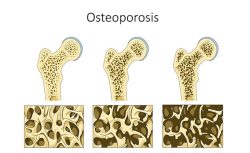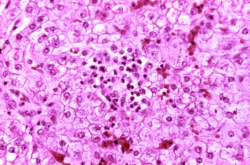I started thinking about the relationship between autism and mitochondrial dysfunction in the opposite direction from most people. I began studying mitochondrial dysfunction before I did much research into autism. Most people who look deeply enough into the causes and symptoms of autism to note the relationship between mitochondrial health and autism are trying to find a cause/cure for autism; not to formulate an overarching theory about mitochondrial dysfunction and various diseases. I came about it from the mito side – I’m strange like that. No matter how you come to it, there is quite a bit of evidence that mitochondrial dysfunction is related to autism. Perhaps it’s presumptive of me to say this – but of course there are links between mitochondrial dysfunction and autism! Autism is a multi-symptom chronic disease that primarily affects the brain. All mitochondrial dysfunction related diseases are chronic multi-symptom illnesses, and brain cells are dense with mitochondria, so mitochondrial dysfunction should be at the top of the list of possible causes. Apparently, though, it is not.
A new study, “Mitochondrial Dysfunction as a Neurobiological Subtype of Autism Spectrum Disorder,” published in JAMA Psychiatry in April, 2014, claims:
“This is the first study, to our knowledge, to demonstrate evidence for mitochondrial dysfunction in vivo in the brains of individuals with ASD.”
Connections between autism and mitochondrial dysfunction have been made in earlier studies (links below), so claims that this is the first study to show that are a bit of an exageration. But all the research on mitochondrial health and autism is recent and the fact remains, the relationship is not as well-established as it seems it should be – given the important role of mitochondria as the energy centers of our cells and the similarities between autism and recognized mitochondrial disorders.
Study Basics: A New Measure of Mitochondrial Dysfunction
In the study, researchers assessed brain lactate levels via MRI in 75 children and adults along the autism spectrum and compared them to the same measures taken from healthy, non-autistic, age-matched, children and adults. Brain lactate is emerging as a possible non-invasive measure of mitochondrial damage. Lactate is not supposed to be in the brain, and when it is, that is evidence of damage. In this case, researchers used an MRI to detect what are called lactate doublets, a specific pattern of signal, thought to be indicative of mitochondrial damage and oxidative stress. Other methods of testing mitochondrial function are much more invasive – tissue biopsies – so it’s interesting (and awesome) that they were able to use a non-invasive technique like a MRI to show mitochondrial damage.
Even though MRIs are not nearly as invasive as tissue biopsies, MRI based research still limits the types of participants that can be assessed to those that are able to remain still without sedation for the length of time required for imaging. The study also excluded patients with genetic or metabolic abnormalities (so those with known mitochondrial diseases were not included in the study), a history of neurological injury or uncontrolled seizures. Such exclusions necessarily bias the study toward participants that are higher-functioning individuals. Individuals with more severe ASD were not studied.
Nevertheless, even with these exclusions, the researchers were able to identify differences between the patients and the control group. The researchers report:
“Lactate doublets were present at a significantly higher rate in participants with ASD (13%) than controls (1%) (P=.001), providing in vivo evidence for the presence of mitochondrial dysfunction in the brains of individuals with ASD (Table 1). Elevated lactate correlated significantly with age (P=.004) and was detected more often in adults (20%) than in children (6%). Its presence did not correlate, however, with sex, ASD subtype, intellectual ability, Autism Diagnostic Observation Schedule total score or subscores, or presence of comorbid neurological or psychiatric diagnoses.”
The researchers go on to note that this was the first study to present in vivo evidence for mitochondrial dysfunction in the brains of individuals with ASD – the conclusion boggled my mind as to why it took this so long to reach.
Mitochondria and Disease
It should be noted that little is known about how mitochondria work, or how they relate to the chronic diseases of modernity generally, or autism specifically (they’re just the energy centers of our cells – but they have been treated as if they are nothing to bother looking at). Also, limiting discovery of connections between mitochondrial dysfunction and disease are the testing methods. In vivo testing of mitochondrial function has historically been invasive. Brain biopsies are not exactly an easy, or ethical, option for testing the hypothesis that neurological mitochondrial damage is part of ASD (or any other disease).
Making matters even more complicated, if mitochondrial damage was noted as a cause/effect (it’s probably both – damaged mitochondria produce excess ROS which further damage mitochondria and there is a vicious cycle of damage) of ASD, the question of how mitochondria get damaged would have to be asked. The answer is complicated and not one that anyone in the medical system wants to admit – pharmaceuticals and environmental toxins cause mitochondrial damage. It is easier to say that the problem doesn’t exist, or to look elsewhere, than it is to look into mitochondrial damaging chemicals as the culprits.
Even though, in my mind the link between mitochondrial damage/dysfunction and autism is well established, it is not well established for the general population, so studies like “Mitochondrial Dysfunction as a Neurobiological Subtype of Autism Spectrum Disorder,” are very much necessary and appreciated. This is one more piece of evidence that mitochondria are important, and that ignoring them is madness. Significantly more research needs to be done. There is some research, however. Take for example the following articles:
- “Oxidative Stress in Autism” Pathopsychology 2006
- “Cellular and Molecular Biology of Autism Spectrum Disorders” Book: Bentham Science Publishers 2011
- “Developmental Regression and Mitochondrial Dysfunction in a Child with Autism” Journal of Child Neurology 2008
- “Mitochondrial Disorders and Cerebral Folate Deficiency in Autism Spectrum Disorder” Slideshare
For a disease that has been in the public consciousness for at least the last 25 years and is affecting the lives of 1 in 68 children, along with their loved ones, the research connecting mitochondrial dysfunction to autism is woefully lacking. As someone who is coming to this debate from the side of mito disease first, what I am learning is that regardless of the disease processes that mitochondrial dysfunction are thought to elicit, those diseases are complicated, testing is often insufficient and many researchers and physicians have a difficult time understanding or attributing the seemingly diverse conditions to the mitochondrial dysfunction or damage. This is but one more piece of evidence suggesting that a model of disease that looks at mitochondria is in order.
Participate in Research
Hormones MatterTM is conducting research on the side effects and adverse events associated with the fluoroquinolone antibiotics, Cipro, Levaquin, Avelox and others: The Fluoroquinolone Antibiotics Side Effects Study. The study is anonymous, takes 20-30 minutes to complete and is open to anyone who has used a fluoroquinolone antibiotic. Please complete the study and help us understand the scope of fluoroquinolone reactions.
Hormones MatterTM conducts other crowdsourced surveys on medication reactions. To take one of our other surveys, click here.
To sign up for our newsletter and receive weekly updates on the latest research news, click here.
Information about Fluoroquinolone Toxicity
Information about the author, and adverse reactions to fluoroquinolone antibiotics (Cipro/ciprofloxacin, Levaquin/levofloxacin, Avelox/moxifloxacin and Floxin/ofloxacin) can be found on Lisa Bloomquist’s site, www.floxiehope.com.
What Else Can I Do To Help?
Hormones MatterTM is completely unfunded at this juncture and we rely entirely on crowdsourcing and volunteers to conduct the research and produce quality health education materials for the public. If you’d like help us improve healthcare with better data, get involved. Become an advocate, spread the word about our site, our research and our mission. Suggest a study. Share a study. Join our team. Write for us. Partner with us. Help us grow. For more information contact us at: info@hormonesmatter.com.
To support Hormones Matter and our research projects – Crowdfund Us.













Hi, I wanted to get your opinion on this PubMed study that someone said states, “the study shows 98% of autistic children have a MTHFR gene mutation”
They said:
“If you read the second paragraph under the “Discussion” section (pg 107) it states: “Notably, only 2% of children with ASD in our study
presented without at least one polymorphism in the MTHFR gene.”
If only 2% of the children in the study did not have at least one polymorphism, then that suggests that 98% of the children in the study did. I believe that is where the 98% is coming from – or at least that is the only place that I am making the connection.”
From my understanding, the MTHFR gene is involved in detoxing heavy metals from the body. When I read Dr. Derrick Lonsdale PubMed study on autism and heavy metals (https://www.ncbi.nlm.nih.gov/pubmed/21755304), his finding suggest that all children with autism had high levels of heavy metals. I was just wondering what your opinion is on these connections, if any.
Thanks so much for your time and research. 🙂
Sorry the link to the autism study involving the MTHFR gene mutation is here:
( https://www.ncbi.nlm.nih.gov/m/pubmed/22151477/?i=4&from=/22129897/ )
Effect of a vitamin/mineral supplement on children and adults with autism.
Sorry, this is the link to the autism and MTHFR gene study.
“Association of MTHFR Gene Variants with Autism”
http://www.jpands.org/vol9no4/boris.pdf
Hi Rachel,
Thank YOU for your time and research as well!
My basic opinion is that it’s all connected – MTHFR mutations, mitochondrial dysfunction, heavy metal overload, lack of mineral absorption, vitamin deficiencies, hormonal abnormalities, gut destruction, oxidant overload, inflammation, etc. All of those occur with chronic, “mysterious,” diseases at all stages of development – and when they occur early, an autism diagnosis tends to result.
Dr. Amy Yasko has a lot of interesting and insightful work around the connections between MTHFR mutations and autism. I have not thoroughly read her work yet, but her publications have been highly recommended.
Do you know what the percentage of the general population with MTHFR mutations is?
Thanks for reading this post, and for your comment!
Regards,
Lisa
Great link! Thank you, Scott!
Mitochondrial dysfunction and molecular pathways of disease — http://mitochondrial-dysfunction.com/mito_disorders_autism.html